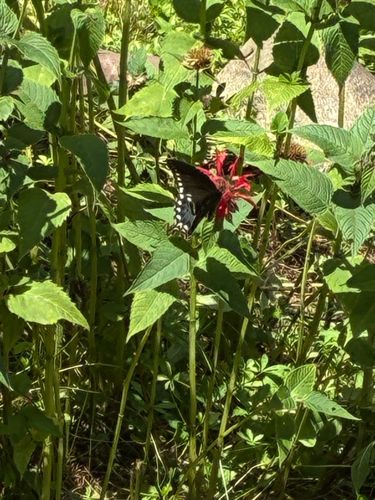Eastern Black Swallowtail
Scientific Name: Papilio polyxenes
Order & Family: Order: Lepidoptera, Family: Papilionidae
Size: Wingspan typically ranges from 7 to 9 cm (2.8 to 3.5 inches).

Natural Habitat
Found in open, sunny areas including gardens, meadows, fields, and roadsides. They are common throughout eastern North America.
Diet & Feeding
Adults primarily feed on nectar from a wide variety of flowers, including milkweed, clover, thistle, and coneflowers (which appears to be the flower in the image). Larvae (caterpillars) feed on plants in the carrot family (Apiaceae), such as dill, parsley, fennel, and queen Anne's lace.
Behavior Patterns
Adults are active during the day, especially in sunny areas. They are strong fliers and are known to be migratory. Females lay eggs individually on host plants. Larvae (caterpillars) feed on host plant leaves. Pupation occurs in a chrysalis, often camouflaged.
Risks & Benefits
Benefits: Important pollinators for many flowering plants, contributing to plant reproduction and ecosystem health. Larvae can be considered a minor pest to garden herbs, but generally, their impact is negligible. They are harmless to humans.
Identified on: 8/9/2025